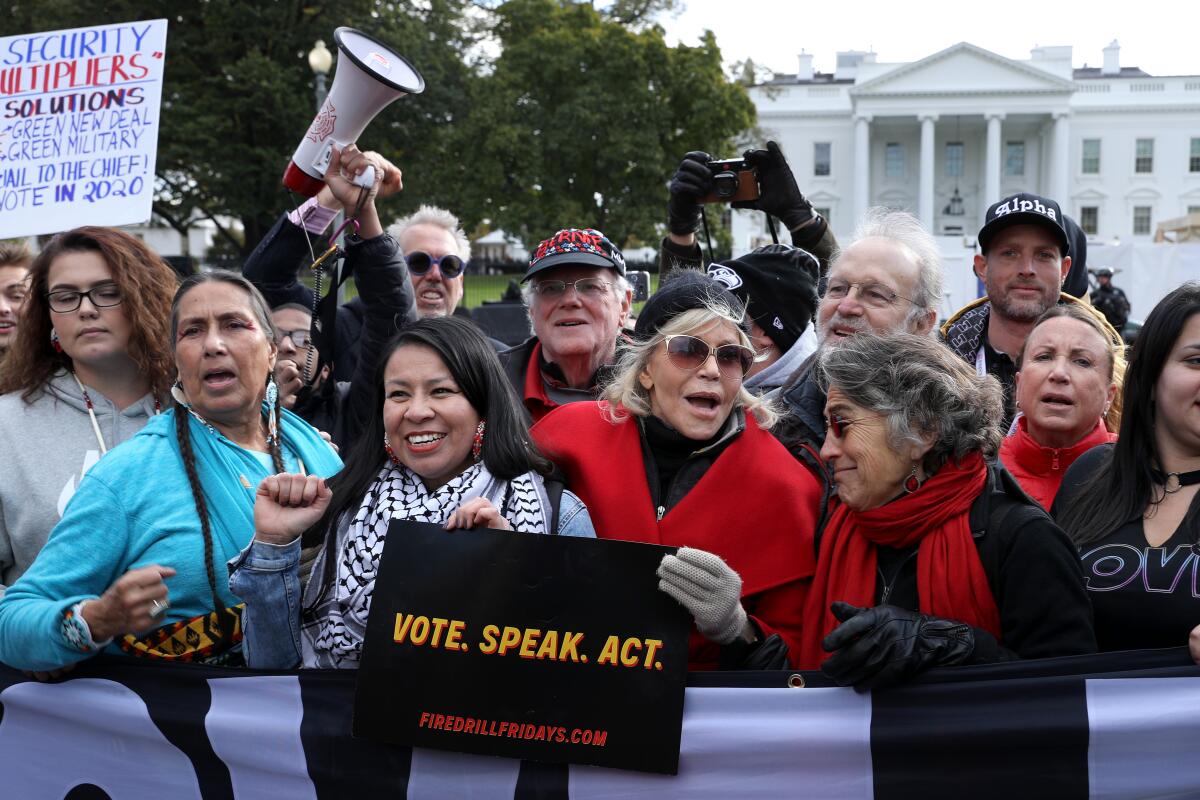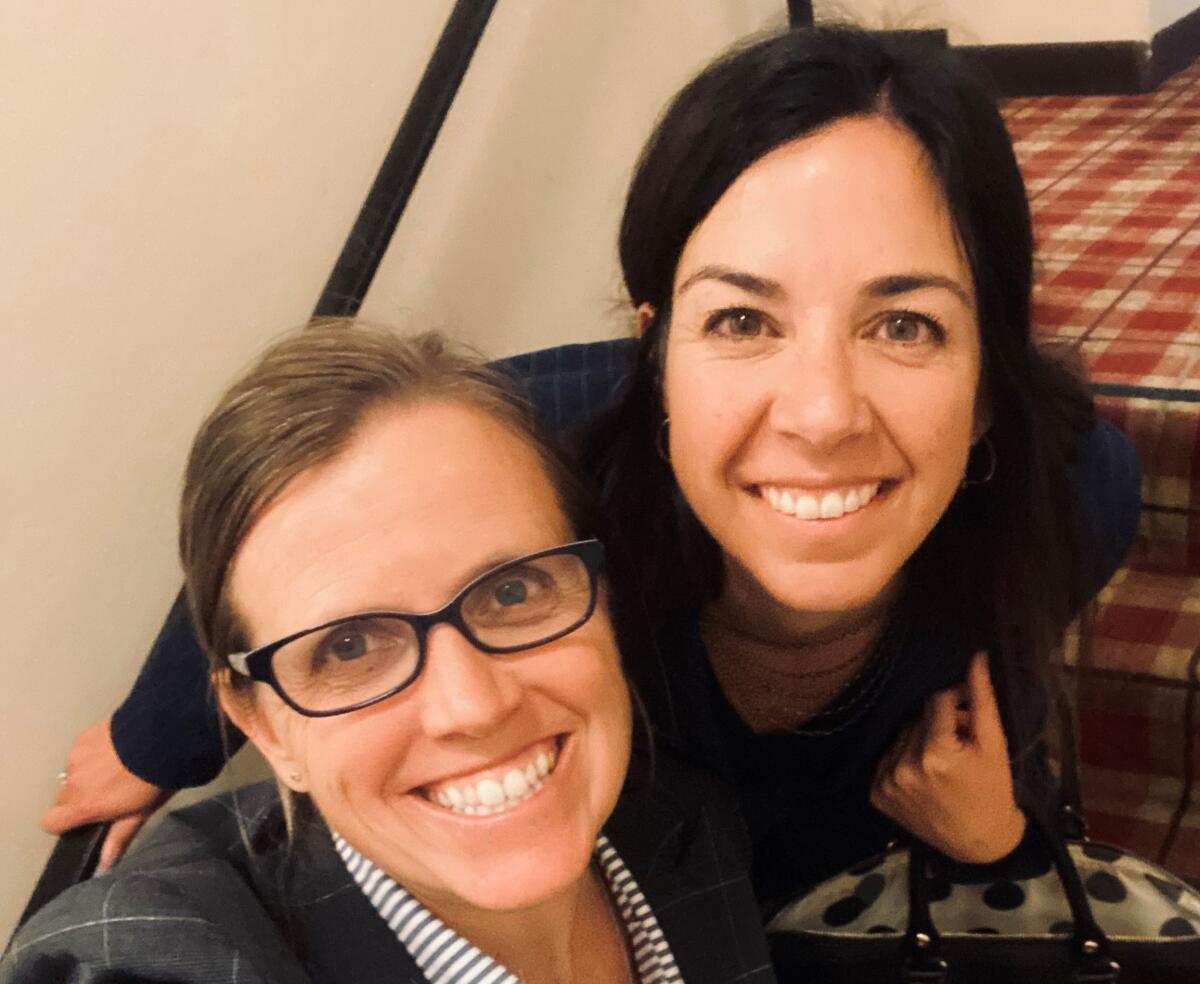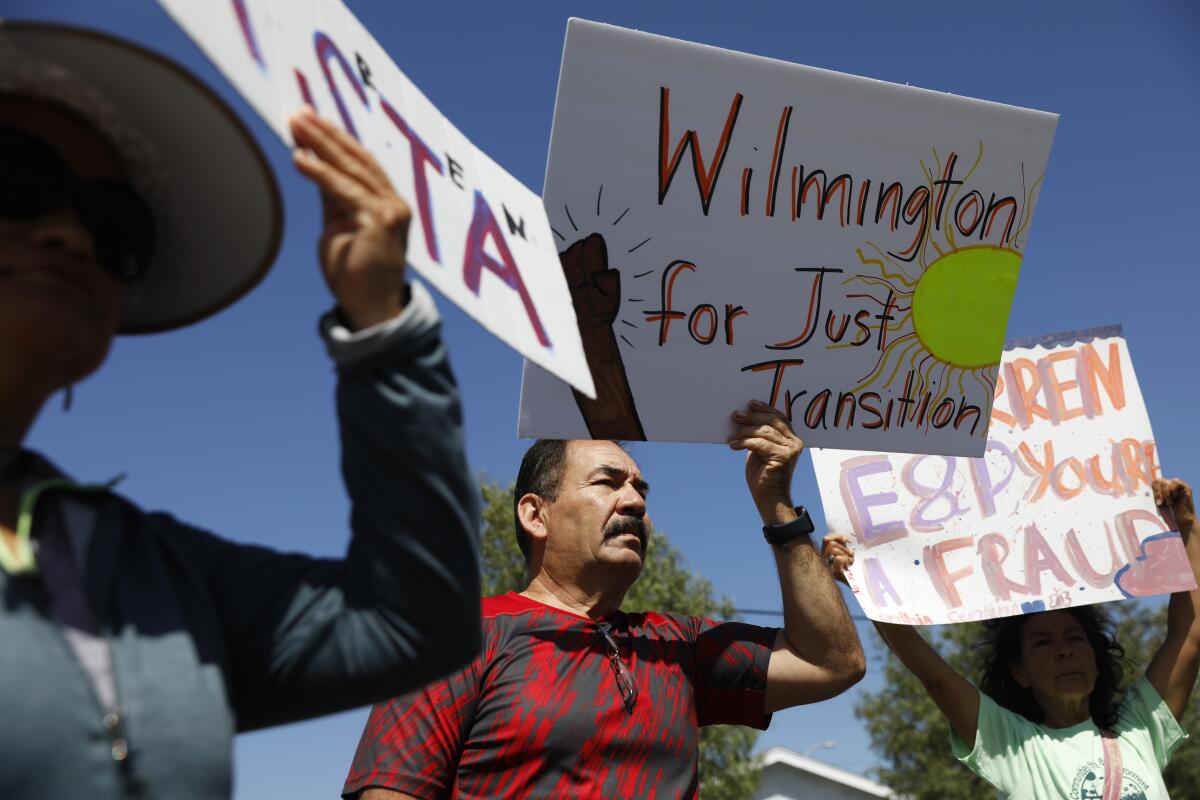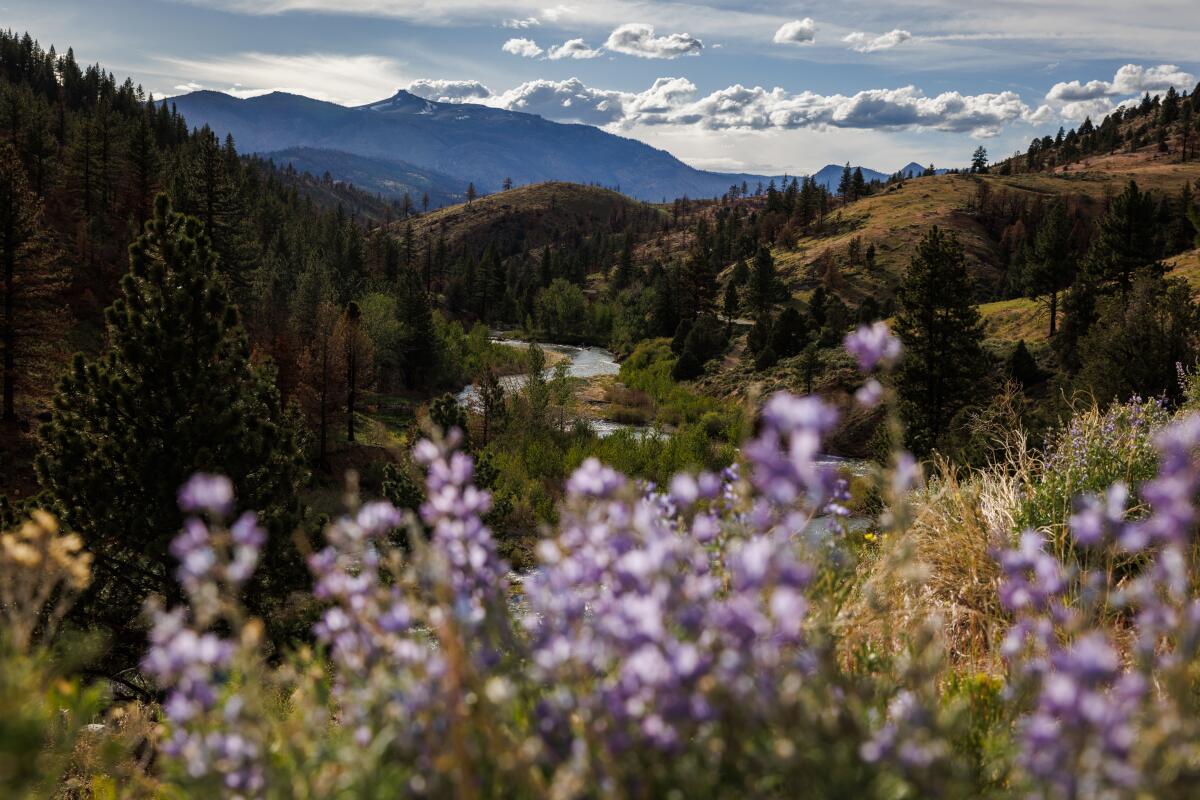Women in environmental leadership. Making progress? Or hitting more ceilings?

This is the June 9, 2022, edition of Boiling Point, a weekly newsletter about climate change and the environment in California and the American West. Sign up here to get it in your inbox.
Good morning. I’m Stuart Leavenworth, editor of Boiling Point, filling in for Sammy Roth. He will be back next week.
As we mull the fate of the planet, let’s face it: Women care more about climate change and the environment than men do.
At least that’s what they tell pollsters. A large body of national research has documented this gender gap — not a huge divide but one durable over time.
This remains true in this not-so-exceptional Golden State, where a 2021 Public Policy Institute of California poll showed that women surveyed were noticeably more concerned than men about climate threats such as extreme heat waves, rising sea levels and wildfires.
So what are the implications? Outside of a few truly exceptional nations — such as Iceland, Finland and New Zealand — men remain largely in power worldwide. That means that female priorities on a range of issues are not getting sufficient traction.
California is a good laboratory to explore women’s impact on environmental policy and the hurdles they continue to face. Over the decades, numerous female environmental leaders have sprung from California, including former Air Resources Board Chair Mary Nichols as well as celebrity advocates such as Erin Brockovich and Jane Fonda.
Newer leaders are now coming up. One of them is Jennifer Fearing. Although hardly a household name, Fearing is well known in Sacramento as one of the Capitol’s most effective public interest lobbyists — as well as a spirited dog lover, vegan and feminist.

Fearing started out as an animal welfare advocate, working for the Humane Society. In 2008, she led the passage of Proposition 2, a landmark ballot measure that restricted the confinement of hens and other factory farm animals. She quickly learned that animal welfare could win bipartisan support, even from rural Republicans.
As she recently told me about her pitch: “It wasn’t coming from a place of, like, animals have rights. It was about humans — that humans have a moral responsibility about how we wield power.”
In 2014, Fearing founded her own lobbying firm, Fearless Advocacy, just a few years before controversy engulfed the Humane Society. Numerous women came forward to accuse the group’s charismatic chief executive, Wayne Pacelle, of sexual abuse. After the Humane Society’s board initially backed him, Fearing publicly broke from the group in early 2018, calling for “a complete leadership change.” Pacelle denied each of the allegations but ended up resigning days later.
For the record:
4:03 p.m. June 9, 2022An earlier version of this newsletter incorrectly listed Azul, a marine conservation organization, as one of Jennifer Fearing’s clients.
Fearing has since expanded her client list to include a range of nonprofits, from groups representing game wardens to traditional conservation organizations to environmental justice groups. These include the Leadership Counsel for Justice & Accountability, which advocates for low-income communities in the San Joaquin and eastern Coachella valleys.
Currently, she is at the center of a campaign to reduce single-use plastics and polystyrene food containers, which could be heading to the November ballot.
My interview with Fearing has been edited for clarity and brevity:
ME: What is your current take on women in the California environmental movement? Are women making progress? Treading water?
FEARING: I think we’ve been making steady progress, but there’s still a lot to be done. The march toward equity, as it is in many workforces, is not as fast as we would like it to be.
ME: Why is it important that women be environment leaders?
FEARING: I am a feminist writ large. So I think it is important that women have a voice in everything. There’s lots of research out there that when women are represented in the leadership ranks, in corporate boards or nonprofits, there’s an increase in profitability, there’s an increase in results. There’s a difference in how decisions get made that make them more durable.
ME: I’ve seen it written that there is a correlation between gender and commitment to environmental protection. How do you feel about that?
FEARING: I don’t want to overgeneralize, especially right now when we are understanding “gender” to be more fluid. But I do feel there is a feminine or female way of working in the world. I feel we are natural empaths. A lot of our calling to this work is not to gain power but to make change. It comes from a place of deep identification with innocent beings, whether they be animal or human, or special places we care about. That is what powers us. That is what fuels us, not a desire for title or treasure.
I don’t want to suggest there aren’t men driven by those things, but the women I work with, their motivation comes from a deep reservoir of empathy — a compassion and commitment to leaving the planet better.
ME: You mentioned you had a recent conversation with Mary Nichols on this topic. Can you share some of that?
FEARING: I was really struck. She told me a bit of her biography and life story, including a key period, when she moved to California in 1971.
Just so you know, I was born in 1971!
So it was really interesting to hear about her career and early environmental work. And of course, back then, there were far fewer women involved in positions of leadership. So she checked me on that a bit. It’s only been the last few years I’ve been paying attention to women being ascendant in top positions in California, but it’s been a much longer trend line than that.
One thing I took from that conversation was the power that governors have with their appointments. You know, they can choose to give the car keys to women, so they can really drive, not just be passengers.
ME: And yet in terms of women in leadership positions, the most influential position is that of governor. How hopeful are you that California will soon elect a woman governor, and how quickly do you think it will happen?
FEARING: Well, I just testified yesterday in a committee hearing alongside Lt. Gov. Eleni Kounalakis, who is co-sponsoring legislation to ban the mining of the deep sea off California’s coasts. She seems like an obvious candidate for governor.
ME: It’s kind of staggering, don’t you think, that California is so far behind other states in this regard?
FEARING: Honestly, it should humble us. California has the right to brag about its particular brand of exceptionalism. But California also has to own that we haven’t produced that result, and be honest about our history. … For all our progressive ideals, we have kind of failed a basic test there so far.
ME: Are there particular women who have inspired you as an advocate?
FEARING: I have always deeply admired Jane Goodall and her spirit and her intersectional kind of nature, drawing connections between things. That has made me want to work on a broader array of causes.
I’ve also been inspired by women such as Marce Gutiérrez-Graudiņš (leader of Azul, a marine conservation organization) and Veronica Garibay and Phoebe Seaton (co-founders, respectively, of the Leadership Counsel for Justice & Accountability). These are voices of the environmental justice community — people who’ve borne the brunt of so many bad choices we’ve made about industry, about pollution.
I really wish that more funders would seek out these kind of groups. They are not making top-down decisions about what causes to pursue. They are all about, “This is what the community has identified as priorities. Now we will go with them to push for that.” It’s a real reversal of what I’ve experienced.
ME: You’ve been working as an advocate at the state Capitol now since the early 2000s. Can you talk a bit about how it’s changed for you and others?
FEARING: I’ve seen a big increase in the number of women, and also persons of color, advocating — both of which I applaud.
But I mean, I could send you a picture I snapped last week on the last day of the first house deadline in the Assembly, and it was nothing but a sea of, like, middle-aged white dudes in suits.
Some things have changed. Mary [Nichols] and I were comparing notes, and 15 years ago, I would get calls before Fish and Game Commission meetings from wardens telling me they’d read online about threats against me. They wanted me to call them when I was in the parking lot, so they could escort me into the meeting to keep me safe.
That seems wild to me now. There has been real and rapid progress in settings like that one.
ME: You’ve also been part of the Me Too movement, both with your background at the Humane Society and what you’ve witnessed at the Legislature. Allegations of abuse and harassment continue at the Capitol. What are your thoughts about progress on that front?
FEARING: The Capitol remains an environment that needs to improve processes for ensuring the protection of their employees and advocates like myself from predatory behavior.
Like, full stop. We need more improvement and we need it now.
On that note, here is what’s happening across the West.
ENVIRONMENTAL JUSTICE

Despite pledges by Gov. Gavin Newsom to protect communities near oil extraction sites, his regulators are allowing new drilling in the Harbor region of Los Angeles, triggering a neighborhood outcry, as my colleague Tony Briscoe reports. Wilmington residents are demanding city officials block Warren Resources’ planned construction of up to six new wells approved by state regulators. “We are surrounded by industries that are polluting our communities and have polluters right next to our homes, schools and parks,” resident Nizgui Gomez told reporters.
The South Coast Air Quality Management District has been spending millions of grant dollars in recent years to subsidize natural gas trucks and infrastructure instead of cleaner electric vehicles. Watchdogs for low-income neighborhoods, plagued by port and truck pollution, are protesting, as Miranda Green writes in a deeply reported article for Floodlight, in partnership with the Guardian and Capital & Main. While air regulators say electric vehicles would be too expensive a transition right now, Green notes some interesting financial ties between the air district and a “partnership” that includes oil and gas companies.
California’s “scoping plan” to reduce greenhouse gas emissions is coming under fire from advisors and outside critics who say it is too little, too late, given the climate threat. Some 73 environmental justice groups wrote a letter calling the California Air Resources Board’s proposed plan “a setback for the state and the world,” as detailed by Nadia Lopez for Cal Matters.
Elsewhere around the West, marginalized communities continue to confront fossil-fuel projects, although one is celebrating a victory. In Arizona, state regulators for the second time rejected expansion of the Coolidge Generating Station, a natural gas plant near the historically Black community of Randolph. About two dozen opponents of the plant erupted in cheers at the vote Monday, as Ryan Randazzo reported for the Arizona Republic.
EARTH, WATER AND FIRE
Once again, parts of the San Joaquin Valley have that “sinking feeling,” as surface ground levels drop in some places a foot yearly, due to excessive pumping of groundwater. A new Stanford University study projects that subsidence will likely continue for decades or centuries, even if aquifer levels were to stop declining, The Times’ Ian James reports. There is a fix, researchers say, but it will involve some sacrifice.
California has ordered thousands of farms and cities to stop pumping water during the drought, Kurtis Alexander reports for the San Francisco Chronicle. But after years of fighting farmers in court to reduce water use, California may soon add some carrots to its bag of legal sticks. A proposal in the state Senate would spend up to $1.5 billion to buy the “senior water rights” that allow growers to take as much water as needed from the state’s rivers and streams, Adam Beam notes for the Associated Press.
It’s not just Farmer John who struggles to go on a water diet. Urban areas in coastal Southern California increased water usage by more than 25% for the month of April, despite pleas to conserve, my colleague Hayley Smith reports. These findings come as San Diego lobbies the state to be relieved from conservation mandates, Joshua Emerson Smith reports for the San Diego Union Tribune. Hoping to crack down on water hogs amid the drought, the Las Virgenes Municipal Water District has a secret weapon — a tiny disk that will drastically reduce water flow to customers who refuse to abide by water restrictions. Jaime Ding of The Times digs into the details. Out in Joshua Tree National Park, meanwhile, a popular trail has been closed to allow water access for bighorn sheep, Christian Martinez reports for The Times.
While the fire season has been somewhat cool of late, it could heat up the rest of this week, reports Hayley Smith. And with dry, windy conditions, fire can strike anytime, anywhere in California — as residents of Laguna Niguel learned last month. My colleague Hannah Fry reconstructs the speed and ferocity of this early-May blaze in Orange County, which defied efforts by firefighters to prevent it from torching and damaging more than 30 homes.
THE ENERGY TRANSITION

Los Angeles’ decision to ban most gas appliances in new homes has rekindled the debate among gourmands about whether their culinary feats can be achieved with electric induction stoves. Cooking columnist Ben Mims, who has produced some of my favorite Times recipes, including Korean corn grilled cheese, delved into the question. His kitchen-tested takeaway: “By and large, you can get pretty much the same results” with electric, as opposed to gas stoves. I’d also urge you to read this Jenn Harris story on what this transition could mean for your favorite Korean restaurants.
The gas delivered to your homes comes from oil wells, and they can leak and imperil people living nearby. Janet Wilson of the Desert Sun reports there are now 21 wells leaking near homes in Bakersfield. Meanwhile, oil and gas companies in the Permian Basin have internal data showing their methane emissions are likely much higher than they’re reporting publicly, according to a new report from House Democrats obtained by Steven Mufson of the Washington Post. Meanwhile, California won a gas extraction victory Friday, when the U.S. 9th Circuit Court of Appeals blocked fracking off the California coast, per a report from The Times’ Christian Martinez.
With canyon dust still on his boots, Sammy Roth is off this week writing about the West’s energy transition. And hardly a day passes without something new to chronicle there. As The Times’ Eli Stokols reports, President Biden signed an executive action Monday halting for two years any new tariffs on solar panel parts from Asia, a move aimed at increasing solar power installations. As Rob Nikolewski reports for the Union Tribune, San Diego will soon have a new solar- and battery-powered microgrid to help avoid power shutoffs during fires. There’s also a new battery storage system at PG&E’s Moss Landing plant, Tess Kenny notes in the Monterey Herald. Farther north, an Oregon utility is building what is dubbed “the nation’s first large-scale wind, solar and battery facility,” Monica Samayoa reports for Oregon Public Radio.
ONE MORE THING

Alpine County, south of Tahoe, is home to a mere 1,200 residents. I suspect its population might grow a bit because of Mark Z. Barabak’s recent loving portrait of Alpine, which, as our columnist writes, is “perched like an emerald on the crest of the Sierra Nevada.”
I can attest that this remote county is a jewel, regardless of the fact it tilts firmly blue in a decidedly red mountain region — the focus of Mark’s column. Back when I was younger and fitter and living in Sacramento, I’d join friends on camping and bicycling trips to Grover Hot Springs State Park, outside of Markleeville. From there, we’d launch our two-wheeled contraptions up and over mountain peaks, pretending we were part of a Tour de France breakaway in the Pyrenees.
I can see Alpine’s attraction. But before the romantic restless of California’s cities move up to Alpine County, there’s something they should know — this place burns.
In 2021, the Tamarack fire tore through more than 68,000 acres of the Sierra, much of it in Alpine County. It threatened Markleeville, roared into Grover Hot Springs State Park, destroyed some park structures and scorched the campground where my friends and I once pitched our tents.
The good news is that the state park reopened for hiking and picnicking on May 6, and part of the campground reopened this month, according to the park’s website. But the hot spring pools are still closed. And the fire danger is still there, possibly worse this summer than the past two.
So by all means, visit Alpine County. Just be careful — in any permanent sense — where you pitch your tent.
We’ll be back in your inbox next week. If you enjoyed this newsletter, please consider forwarding it to your friends and colleagues.




